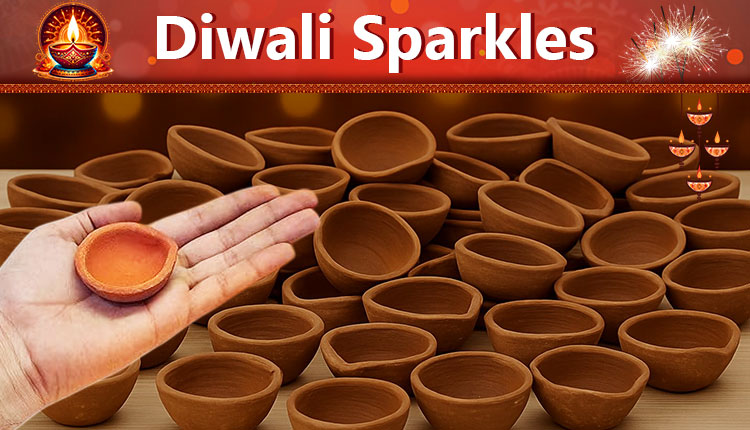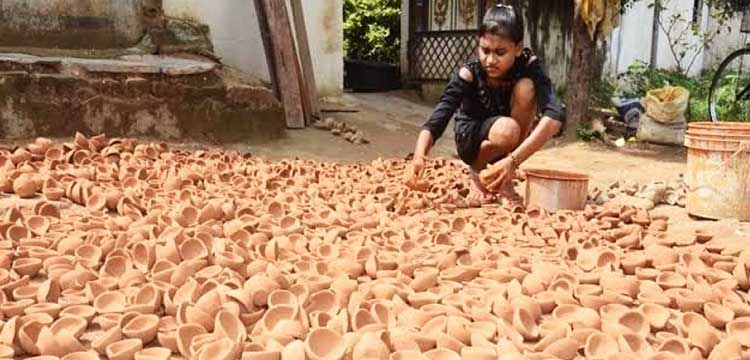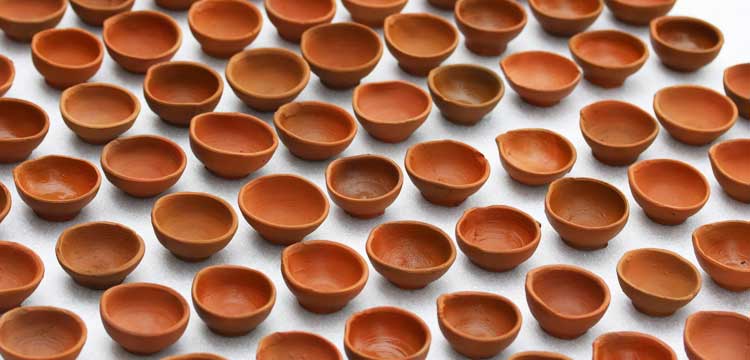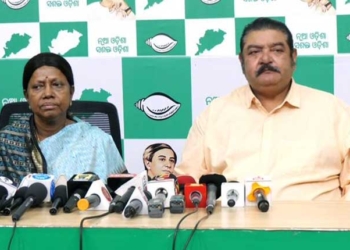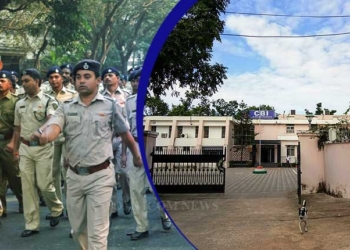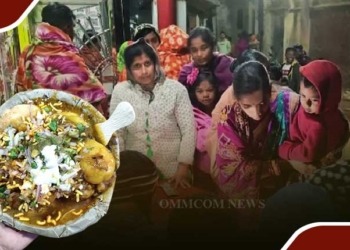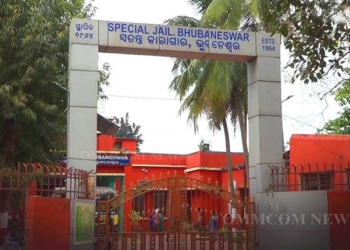Nabarangpur: As the festival of lights draws near, markets across Odisha sparkle with the gleam of electric diyas, colourful LEDs, and scented candles.
But in the quiet lanes of Belgaon village under Jharigaon block in Nabarangpur district, the flicker of another kind of light still endures — the humble clay lamp, moulded patiently by the calloused hands of potter families fighting to keep their centuries-old craft alive.
Once, the rhythmic sound of spinning potter wheels and the earthy scent of wet clay defined the identity of this village.
Nearly 60 potter families earned their livelihood through the sale of hand-crafted lamps, pots, and household items.
But today, fewer than half remain in the trade. The rest have moved on — some to daily wage labour, others to small businesses — driven away by dwindling demand and the dominance of plastic, steel, and fiber products.
“For us, Diwali used to mean long nights of work and good income. Now, even during the festival, people buy fewer clay lamps. Most prefer electric lights,” says Raghu Majhi, a potter in Belgaon, his hands stained with the clay that once promised prosperity.
The surviving potter families are now busy shaping thousands of diyas in the hope that this Diwali might bring some relief.
Traders from neighbouring Chhattisgarh still visit the village to purchase these lamps in bulk, but the profits remain modest.
“Earlier, we would sell everything we made. Now, much of it remains unsold even after Diwali,” says another artisan, her voice heavy with quiet resignation.
The shift in consumer habits has hit the community hard. Clay, once considered auspicious for its purity and symbolism, is being replaced by convenience and modernity.
The potters argue that what is being lost is not merely a source of income, but a cultural tradition — a tactile link to the soil.
Many have urged the district administration to provide market linkages, financial incentives, and dedicated spaces for artisans to sell their products. Without such support, they fear, the potter’s wheel may soon fall silent.
Meanwhile, local intellectuals and community groups have stepped forward to promote the use of earthen lamps this Diwali, encouraging people to choose tradition over convenience. “Lighting a clay diya is more than an act of worship — it’s an act of preservation,” says a local schoolteacher who has launched a campaign to support potter families.
For now, the potters of Belgaon continue their work in hope — shaping not just clay, but resilience itself. As their diyas dry in the autumn sun, each one holds within it a quiet prayer: that their craft, like the light it brings, will never be extinguished.




